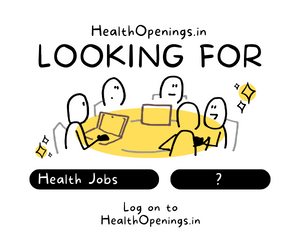The healthcare landscape is constantly evolving, and staying up-to-date with the latest trends is crucial for healthcare professionals. In this comprehensive article, we will explore the cutting-edge trends that are revolutionizing the healthcare industry, promising a brighter future for both healthcare providers and patients.
Telehealth: The New Norm in Healthcare Delivery
Telehealth has rapidly transformed from an emerging technology to a cornerstone of modern healthcare, particularly in light of the recent global pandemic. It enables healthcare professionals to conduct virtual consultations, remotely monitor patients, and offer personalized care from their homes or medical facilities. This revolutionary technology has not only expanded access to healthcare services but has also reduced wait times, minimized infection risks, and significantly improved overall patient satisfaction.
Telehealth’s scope has broadened to encompass various services, such as remote patient monitoring, virtual mental health therapy, and telepharmacy. Remote monitoring devices now allow healthcare providers to track patients’ vital signs and chronic conditions in real-time, leading to proactive interventions and better outcomes.
As telehealth becomes an integral part of healthcare delivery, healthcare professionals must adapt to this new model of care. This transition involves mastering telemedicine platforms, ensuring patient data security, and enhancing digital communication skills. Telehealth is not merely a response to a crisis; it is a fundamental shift in healthcare delivery that offers convenience and accessibility to patients.
Artificial Intelligence (AI): Augmenting Healthcare Decision-Making
Artificial Intelligence (AI) is revolutionizing healthcare by enhancing diagnostic accuracy, streamlining administrative tasks, and ultimately improving patient outcomes. AI algorithms have the capacity to analyze vast datasets, recognize patterns, and offer real-time insights.
In radiology, AI-powered image analysis tools assist radiologists in detecting abnormalities with unparalleled precision. AI can analyze medical images, such as X-rays, MRIs, and CT scans, and highlight potential areas of concern. This not only reduces the risk of misdiagnosis but also provides radiologists with valuable insights for more informed decision-making.
AI is also transforming patient engagement through virtual health assistants and chatbots. These AI-driven tools offer immediate responses to patient inquiries, schedule appointments, and provide information, enhancing overall patient experiences and facilitating quicker access to care.
Moreover, AI is being harnessed for predictive analytics and early disease detection. Machine learning models can analyze patient data to identify individuals at higher risk of certain conditions, allowing for early interventions and preventive measures.
Personalized Medicine: Tailoring Treatments to the Individual
Personalized medicine continues to gain prominence, with advancements in genomics, molecular biology, and data analytics. This approach involves tailoring treatments to an individual’s unique genetic makeup, lifestyle, and specific medical needs.
Genomic sequencing plays a pivotal role in personalized medicine. By analyzing a patient’s genetic profile, healthcare providers can identify genetic markers associated with certain diseases or treatment responses. This information enables the development of highly targeted treatment plans that maximize efficacy and minimize side effects.
Personalized medicine extends beyond genetics to consider environmental factors, lifestyle choices, and social determinants of health. This holistic approach ensures that patients receive comprehensive care that addresses all aspects of their well-being.
The integration of wearable devices and health apps further empowers patients to actively participate in their healthcare. These tools enable individuals to monitor their health metrics, track progress, and communicate with healthcare providers seamlessly.
The Future of Healthcare: Addressing Emerging Trends
Beyond the trends mentioned above, several emerging developments are poised to shape the future of healthcare:
- Blockchain in Healthcare: Blockchain technology is being explored for secure, transparent, and interoperable health records management. It has the potential to enhance data security, streamline data sharing, and improve the integrity of healthcare records.
- 5G Technology: The rollout of 5G networks will enable faster and more reliable telehealth services, particularly in remote and underserved areas. It will facilitate real-time data exchange, supporting remote monitoring and diagnostics.
- Robotics and Automation: Robots are increasingly being utilized in healthcare for tasks such as surgery, medication dispensing, and patient care. Automation streamlines administrative processes, reducing administrative burdens on healthcare professionals.
- Precision Nutrition: The convergence of genetics and nutrition science is paving the way for precision nutrition. Healthcare providers can prescribe personalized dietary recommendations based on an individual’s genetic predispositions and health goals.
Conclusion: Navigating the Healthcare Revolution
The healthcare industry is in a state of constant evolution, driven by innovative technologies and a shift towards patient-centric care. Telehealth, AI, personalized medicine, and emerging trends are collectively shaping the future of healthcare.
To thrive in this dynamic environment, healthcare professionals must embrace these advancements, acquire digital skills, and foster a patient-centered approach to care. By doing so, they contribute to a healthcare ecosystem that prioritizes efficiency, precision, and improved patient outcomes.
In conclusion, the future of healthcare is undeniably promising, marked by innovation, accessibility, and a relentless commitment to providing the highest quality care to patients worldwide. As we navigate the ever-changing landscape of healthcare, these trends serve as beacons guiding us toward a brighter and more patient-centric future.




